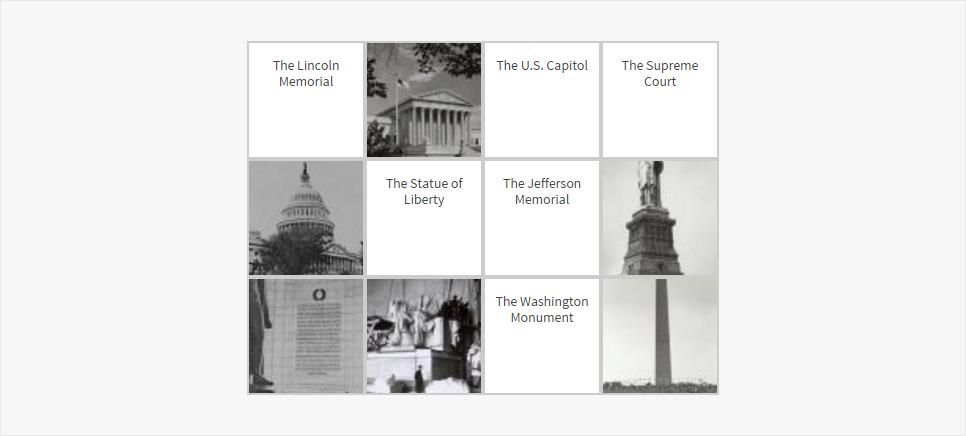In this activity, students will identify and analyze national monuments, statues, and buildings to discover how they represent American people, ideas and institutions. They will critically observe and describe images, and explain how architecture is used to memorialize.
For a version in Spanish, visit:
Monumentos Nacionales Expresan Valores Nacionales.
Suggested Teaching Instructions
This activity fits into an elementary school social studies unit on symbols and American symbolism. For grades 3-5. Approximate time needed is 45 minutes.
Before beginning the activity, review key terms and names, including: liberty, democracy equality justice, Supreme Court, Congress, Thomas Jefferson, Abraham Lincoln, and George Washington.
Tell students that they are going to learn more about how buildings, monuments, and statues are symbols that represent people, ideas and institutions. Ask students what a symbol is and for some examples of symbols that they know.
Open the activity and click on one of the images. Click on the "open in new window" icon to see it more closely.
Model careful document analysis to see if students recognize the structure. Return to the activity and ask what person, idea or institution the structure represents. Instruct students to create a T-chart and record what the structure is on one side and their answer on the other side. In the activity, click on the image and then on the box that contains the answer to make a match.
Ask students to work with a partner, matching each monument, building, or statue with a person, idea or institution. Remind students to record the name of the structure and what it represents on the T-chart. When the students complete the activity, the original design for the Great Seal of the United States will appear.
Review each of the structures with the students and ask them what person, idea or institution they believe it represents. Ask them why they think the seal is the "big picture" document. Discuss with the class that the seal uses symbols to represent the United States, just as structures can represent people, ideas and institutions. The report that was produced about the Seal is an excellent tool that explains the intent of each symbol and what it represents.
- Conclude the activity by asking students to respond to the following questions:
- How does the design of a building or monument represent the subject?
- Why do you think the we honor certain people, ideas and institutions?
The
Finding American Symbols activity about the
Great Seal of the United States could be used as a follow-up activity which provides a more in-depth examination of the Great Seal and the use of symbols. It could also be used as an introduction activity at the beginning of the lesson.





